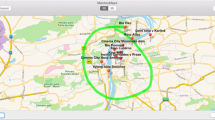Abstract
Multimodal interaction serves an important role in human-computer interaction. In this paper we propose a multimodal interaction model based on the latest cognitive research findings. The proposed model combines two proven neural computations, and helps to reveal the enhancement or depression influence of multimodal presentation upon the corresponding interaction task performance. A set of experiments is designed and conducted within the constraints of the model, which demonstrates the observed performance enhancement and depression effects. Our exploration and the experimental results help to further solve the question about how tactile feedback signal contribute the multimodal interaction efficiency which could provide guidelines for designing the tactile feedback in multimodal interaction.
摘要
创新点
多通道交互在人机交互中具有重要的作用。 本文基于最新的认知研究成果, 提出了一种多通道交互模型。 该模型把两个已被证明的神经计算相结合, 用于揭示不同的多通道呈现对相应的交互任务绩效所产生的增强或抑制效果。 本文在该模型的适用约束下设计并实现了一组实验, 实验得出观察到的绩效增强效应和观察到的绩效抑制效应。 本文的探索思路和实验结果有助于进一步解决触觉反馈信息对多通道交互效率的贡献问题, 从而为多通道交互中触觉反馈的设计提供指导。
Similar content being viewed by others
References
Jaimes A, Sebe N. Multimodal human-computer interaction: a survey. Comput Vis Image Und, 2007, 108: 116–134
Li M Z, Dai G Z, Dong S H. Software model and interaction algorithm of multimodal interface (in Chinese). Chinese J Comput, 1998, 21: 111–118
Salvendy G. Handbook of Human Factors and Ergonomics. Hoboken: John Wiley & Sons, 2012
Ware C. Information Visualization: Perception for Design. San Francisco: Morgan Kaufmann Publishers Incorporated, 2013
Shneiderman B, Plaisant C, Cohen M, et al. Designing the User Interface: Strategies for Effective Human-Computer Interaction. 5th ed. Upper Saddle River: Addison-Wesley, 2009
Wang H A, Ma C X. Interactive multi-scale structures for summarizing video content. Sci China Inf Sci, 2013, 56: 052108
Gallace A, Spence C. In Touch With the Future: the Sense of Touch From Cognitive Neuroscience to Virtual Reality. Oxford: Oxford University Press, 2014
Gallace A, Tan Z H, Spence C. The body surface as a communication system: the state of the art after 50 years. Presence, 2007, 16: 655–676
Bau O, Poupyrev I, Israr A, et al. TeslaTouch: electrovibration for touch surfaces. In: Proceedings of the 23rd Annual ACM Symposium on User Interface Software and Technology. New York: ACM Press, 2010. 283–292
McGrath B J, Estrada A, Braithwaite M B, et al. Tactile Situation Awareness System Flight Demonstration. Army Aeromedical Resaerch Lab Fort Rucker AL Technical Report USAARL 2004-10. 2004
Lu L, Tian F, Dai G Z, et al. A study of the multimodal congnition and interaction based on touch, audition and vision (in Chinese). J Comput Aided Design Comput Graph, 2014, 26: 654–661
McGurk H, MacDonald J. Hearing lips and seeing voices. Nature, 1976, 264, 746–748
Mayer R E. Multimedia learning. Psychol Learn Motiv, 2002, 41: 85–139
Kieras D E, Meyer D E. An overview of the EPIC architecture for cognition and performance with application to human-computer interaction. Human-Comput Interact, 1997, 12: 391–438
Ohshiro T, Angelaki D E, de Angelis G C. A normalization model of multisensory integration. Nature Neurosci, 2011, 14: 775–782
Carandini M. From circuits to behavior: a bridge too far? Nature Neurosci, 2012, 15: 507–509
Vroomen J, Keetels M. Perception of intersensory synchrony: a tutorial review. Atte Perce Psycho, 2010, 72: 871–884
Calvert G A, Spence C, Stein B E. The Handbook of Multisensory Processes. Cambridge: MIT Press, 2004
Ernst M O, Bülthoff H H. Merging the senses into a robust percept. Trends Cogn Sci, 2004, 8: 162–169
Stein B E, Stanford T R, Rowland B A. The neural basis of multisensory integration in the midbrain: its organization and maturation. Hearing Res, 2009, 258: 4–15
Carandini M, Heeger D J. Normalization as a canonical neural computation. Nature Rev Neurosci, 2012, 13: 51–62
Stein B E, Stanford T R. Multisensory integration: current issues from the perspective of the single neuron. Nature Rev Neurosci, 2008, 9: 255–266
Molholm S, Ritter W, Murray M M, et al. Multisensory auditory-visual interactions during early sensory processing in humans: a high-density electrical mapping study. Cogn Brain Res, 2002, 14: 115–128
Baranek G T. Efficacy of sensory and motor interventions for children with autism. J Autism Develop Disord, 2002, 32: 397–422
Brown S, Shankar R, Smith K. Borderline personality disorder and sensory processing impairment. Progress Neurol Psychiat, 2009, 13: 10–16
Stein B E, Meredith M A. The Merging of the Senses. Cambridge: MIT Press, 1993
Meredith M A, Stein B E. Spatial determinants of multisensory integration in cat superior colliculus neurons. J Neurophysiol, 1996, 75: 1843–1857
Meredith M A, Nemitz J W, Stein B E. Determinants of multisensory integration in superior colliculus neurons. I. temporal factors. J Neurosci, 1987, 7: 3215–3229
Meredith M A, Stein B E. Interactions among converging sensory inputs in the superior colliculus. Science, 1983, 221: 389–391
Spence C, Driver J. Crossmodal Space and Crossmodal Attention. Oxford: Oxford University Press, 2004
Gillmeister H, Eimer M. Tactile enhancement of auditory detection and perceived loudness. Brain Res, 2007, 1160: 58–68
Heeger D J. Normalization of cell responses in cat striate cortex. Visual Neurosci, 1992, 9: 181–197
Körding K P, Wolpert D M. Bayesian integration in sensorimotor learning. Nature, 2004, 427: 244–247
Ernst M O, Banks M S. Humans integrate visual and haptic information in a statistically optimal fashion. Nature, 2002, 415: 429–433
Sternberg R. Cognitive Psychology. 3rd ed. Carolina: Wadsworth Publishing, 2003
Author information
Authors and Affiliations
Corresponding author
Rights and permissions
About this article
Cite this article
Lu, L., Lyu, F., Tian, F. et al. An exploratory study of multimodal interaction modeling based on neural computation. Sci. China Inf. Sci. 59, 92106 (2016). https://doi.org/10.1007/s11432-016-5520-1
Received:
Accepted:
Published:
DOI: https://doi.org/10.1007/s11432-016-5520-1
Keywords
- human-computer interaction
- multimodal integration
- interaction model
- touch-included interaction
- cognition
- multisensory integration
- neural computation
- brain coding




